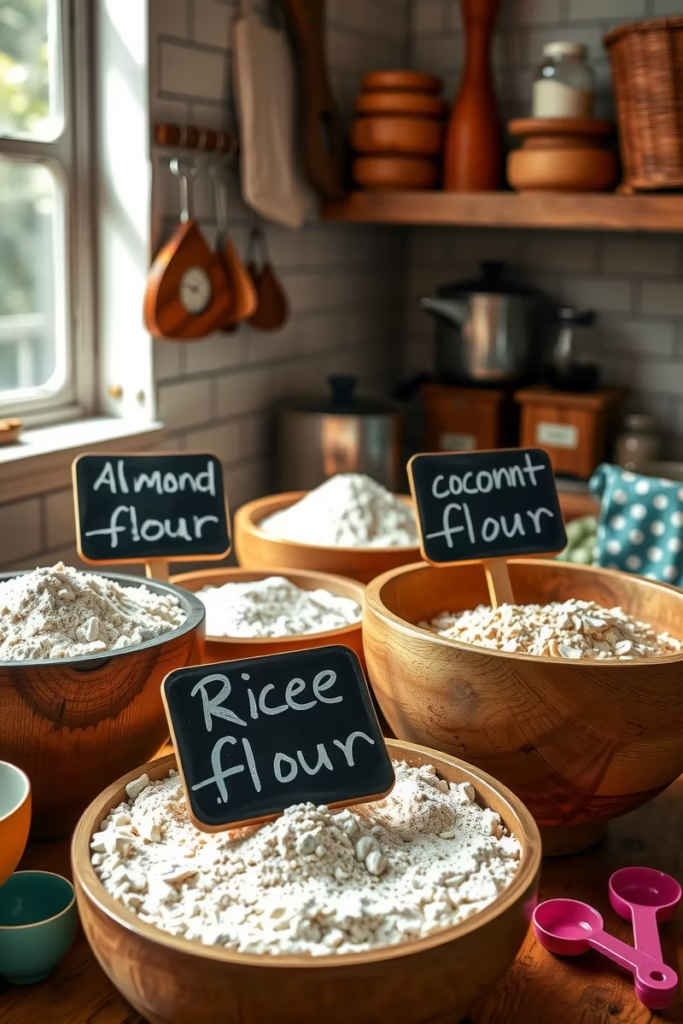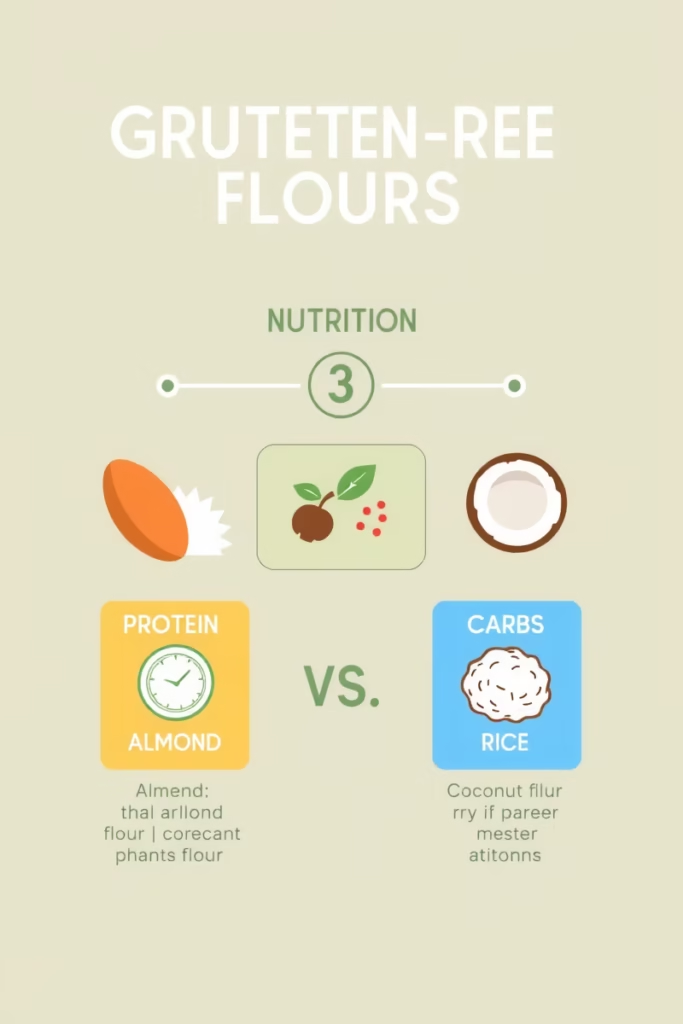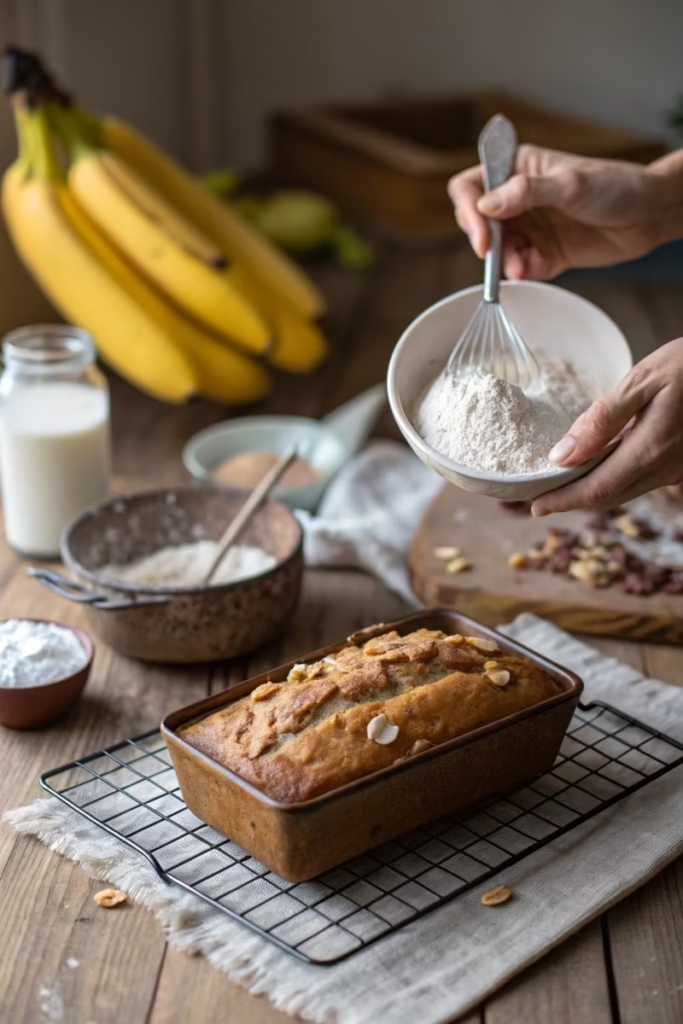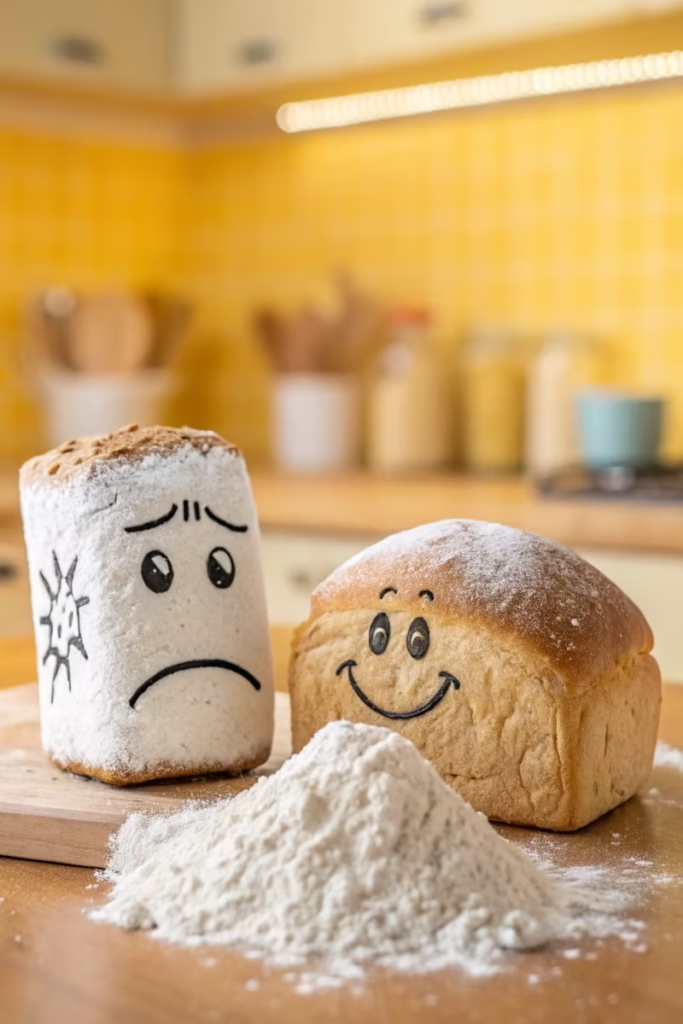Last Updated on April 2, 2025
Table of Contents
Jump To :
Ever stared at a bag of almond flour wondering how it could possibly become a fluffy cake? Or maybe you’ve tried swapping wheat flour for something gluten-free and ended up with a crumbly mess. You’re not alone. Gluten-free baking can feel like a mystery wrapped in a riddle, but today we’re cracking it wide open. Whether you’re new to the gluten-free life or a seasoned pro looking to level up, this guide has everything you need. From the best gluten-free flours to insider tips that’ll save your next batch of cookies, we’ve got you covered. Ready to dive into the world of gluten-free flour basics? Let’s get started.
Types of Gluten-Free Flours: Your Ultimate Cheat Sheet
First things first: not all gluten-free flours are created equal. Each one brings its own flavor, texture, and personality to the table. Here’s a rundown of the heavy hitters you’ll want in your pantry.
Almond Flour
Made from finely ground almonds, this flour’s nutty taste and moist texture make it a star for sweets. Think cookies, cakes, and muffins. It’s high in protein and healthy fats, but it’s not a one-to-one swap for wheat flour. You’ll need extra binding agents like eggs to keep things together.
Coconut Flour
This one’s a diva. Coconut flour soaks up liquid like a sponge, so recipes often call for more eggs or water. It’s light, slightly sweet, and perfect for tender baked goods like pancakes. Bonus: it’s packed with fiber.
Rice Flour
A staple in many gluten-free kitchens, rice flour (white or brown) is mild and versatile. It’s great for breads or as a thickener in sauces. The downside? It can get gritty if not blended with other flours.
Oat Flour
Oats ground into a fine powder give you oat flour, a hearty option with a subtle sweetness. It shines in muffins and quick breads. Just make sure it’s certified gluten-free, since oats can cross-contaminate with wheat during processing.
Comparison Table
| Flour Type | Flavor | Best For | Texture |
|---|---|---|---|
| Almond | Nutty | Cookies, cakes | Moist, dense |
| Coconut | Sweet | Pancakes, muffins | Light, dry |
| Rice | Neutral | Breads, sauces | Smooth, gritty |
| Oat | Mildly sweet | Muffins, breads | Hearty, soft |
Want to try these in action? Check out our Best Almond Flour Chocolate Chip Cookies for a foolproof recipe.
“Almond flour’s versatility makes it my go-to for gluten-free sweets.”
Jane Doe, Gluten-Free Baker
Nutritional Benefits and Drawbacks: What’s Really in Your Flour?
Switching to gluten-free flours isn’t just about dodging gluten. It’s about what you’re gaining (and losing) nutritionally. Let’s break it down.
The Good Stuff
For folks with celiac disease or gluten sensitivity, these flours are a lifeline. Almond flour boasts protein and vitamin E, while coconut flour delivers fiber that keeps you full. Oat flour brings beta-glucans, a heart-healthy compound. Compared to refined wheat flour, many gluten-free options keep more natural nutrients intact.
The Catch
Not all that glitters is gold. Some flours, like rice flour, can spike blood sugar fast because they lack fiber. Others, like coconut flour, are low in protein. And let’s be real: they’re often pricier than wheat flour. Balance is key.
“Gluten-free flours can be nutrient powerhouses, but pairing them smartly is crucial.”
Dr. Sarah Lee, Nutritionist
Curious about gluten-free living? Our Diet-Specific Hacks category dives deeper into making it work for you.
Mastering Gluten-Free Baking: Tips to Nail It Every Time
Ready to bake like a pro? Gluten-free baking takes a little finesse, but these tricks will get you there.
Substitution Ratios
Wheat flour has gluten to hold things together. Without it, you need a plan. A good rule of thumb: use a blend. Mix rice flour with almond flour and a starch like tapioca for structure. For every cup of wheat flour, try 3/4 cup of your blend plus an extra egg or tablespoon of liquid.
Texture Hacks
- Xanthan Gum: A tiny pinch mimics gluten’s stretch.
- More Moisture: Add applesauce or yogurt to combat dryness.
- Rest the Dough: Let it sit 15 minutes to hydrate fully.
Gluten-Free Flour Converter
Starter Recipe: Gluten-Free Banana Bread
Whip up our Gluten-Free Banana Bread Ultimate Guide. It’s a perfect canvas for testing flours. Use oat flour for a hearty bite or almond flour for richness.
Got a visual learner in you? Imagine a golden loaf, steam rising, bananas mashed just right. That’s what we’re aiming for. Need more inspo? The Celiac Disease Foundation offers a handy baking guide worth bookmarking.
Avoiding Common Gluten-Free Baking Pitfalls: Save Your Sweets!
Ever pulled a brick-like loaf from the oven? I’ve been there. Here’s how to dodge the most common gluten-free baking flops.
Mistake #1: Overmixing
Without gluten, overmixing turns batter dense. Stir just until combined.
Mistake #2: Wrong Ratios
Too much coconut flour without extra liquid? You’ll get a desert-dry cake. Stick to recipes or tweak with care.
Mistake #3: Skipping Binders
Gluten-free dough crumbles without help. Add xanthan gum or flax eggs (1 tbsp flaxseed + 3 tbsp water).
Fixes in Action
- Dense bread? Knead less, add a teaspoon of baking powder.
- Crumbly cookies? More fat (butter or oil) saves the day.
I once swapped rice flour for almond in a pinch. Total disaster, but the crumbs made a killer topping for ice cream. Lesson learned!
The Next Frontier: Gluten-Free Flour Innovations
What’s next for gluten-free flours? The future’s looking tasty. New blends and sustainable options are shaking things up.
Emerging Stars
- Chickpea Flour: High protein, great for savory bakes like flatbreads.
- Teff Flour: Tiny grain, big nutrition. Think injera or brownies.
- Lab-Grown Blends: Scientists are crafting flours with perfect textures.
Market Buzz
A 2023 report from Grand View Research predicts the gluten-free market will hit $43 billion by 2030. Why? Demand’s soaring, and brands are listening. Check out this trend analysis for the full scoop.
Sustainability Angle
Teff and chickpea flours use less water than almond, making them eco-friendly picks. It’s baking with a conscience.
"Innovations like teff flour are rewriting the gluten-free playbook."
Mark Evans, Food Trend Analyst
Conclusion: Your Gluten-Free Journey Starts Here
From almond flour to teff, gluten-free flours open a world of possibilities. You’ve got the types, the nutrition scoop, and the baking know-how to make magic happen. So, what’s stopping you? Grab a bag of flour, preheat that oven, and experiment. Want a head start? Download our free gluten-free recipe eBook at Recipes Beyond. Your next masterpiece is waiting!
FAQ: Your Burning Questions Answered
What’s the Best Gluten-Free Flour for Baking?
It depends! Almond flour rocks cookies, while rice flour shines in bread. Blends often win for versatility.
Can You Substitute Gluten-Free Flour in Any Recipe?
Not quite. Adjust liquids and binders, or you’ll flop. Start with tested recipes.
Is Gluten-Free Flour Healthier?
Sometimes. It’s a must for celiac folks, but nutrition varies. Oat flour beats white rice flour on fiber.
Got more questions? Drop ‘em in the comments!







7 thoughts on “Gluten-Free Flour Basics: Everything You Need to Know Today”